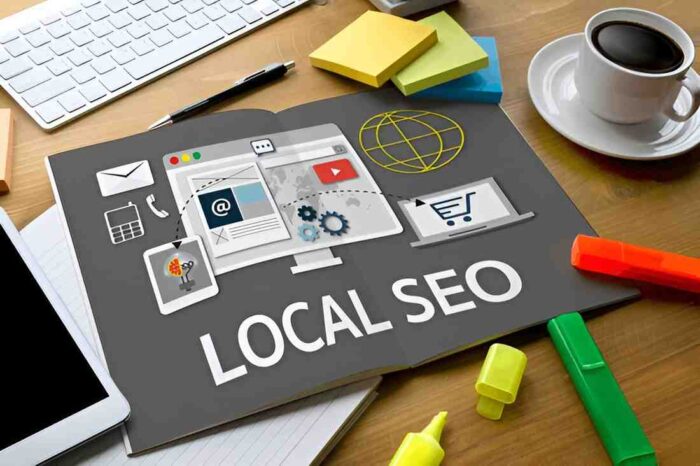Lead generation is crucial for any business. Without a steady stream of leads, it becomes difficult to scale and grow. Automating the lead generation process can save time, reduce human error, and ensure that your business is constantly nurturing potential customers. In this article, I will take you through some of the best tools available for automating your lead generation. I’ll share my experience, break down their key features, and show you how each tool can make a difference in your workflow.
Why Automate Lead Generation?
The first question to address is: why automate lead generation? Lead generation involves a series of steps: identifying potential leads, reaching out to them, and nurturing them through the sales funnel. While the process can be time-consuming and tedious, automation helps in many ways:
- Time Efficiency: Automation handles repetitive tasks, saving you hours of work every day. This allows you to focus on the strategic aspects of your business.
- Scalability: Automation helps you scale your efforts without hiring additional personnel. This is especially useful for small businesses looking to grow.
- Consistency: With automation, you can ensure that your lead generation process runs consistently, without missing out on valuable opportunities.
- Accuracy: Automation reduces the risk of human error, ensuring that no lead is forgotten or mishandled.
What Should You Look For in a Lead Generation Tool?
When selecting a lead generation tool, there are a few features to consider:
- Integration with CRM: Most lead generation tools will work better if they integrate smoothly with your customer relationship management (CRM) software.
- Lead Qualification: The ability to automatically qualify leads helps you focus on those that are most likely to convert.
- Ease of Use: The tool should have an intuitive interface that doesn’t require a steep learning curve.
- Customization: Customizing workflows, emails, and follow-ups is crucial to meet your specific business needs.
- Analytics and Reporting: Having access to detailed metrics helps you fine-tune your lead generation process.
Now that we know what we’re looking for, let’s dive into some of the top tools available to automate lead generation.
1. HubSpot
I’ve been using HubSpot for years, and it has been a game-changer in automating lead generation. HubSpot is an all-in-one inbound marketing platform, and its lead generation features are comprehensive.
Key Features:
- Lead Capture Forms: You can create custom forms and embed them on your website to capture lead information. The forms integrate seamlessly with the CRM.
- Lead Scoring: HubSpot automatically scores your leads based on their engagement with your content. This helps prioritize leads for follow-up.
- Email Automation: You can create automated email sequences to nurture leads and keep them engaged.
- CRM Integration: All leads are automatically added to HubSpot’s CRM, making it easy to track and manage them.
Pros:
- Very user-friendly interface.
- Comprehensive reporting and analytics.
- Free version available with essential features.
Cons:
- Can get pricey as you add more advanced features.
- Some learning curve for more complex features.
2. LinkedIn Sales Navigator
LinkedIn is a powerful tool for finding leads, and Sales Navigator enhances its capabilities for automating lead generation. I’ve found this tool particularly useful for B2B lead generation.
Key Features:
- Advanced Search: Allows you to filter leads based on industry, company size, job title, and more.
- InMail: You can send direct messages to potential leads even if you’re not connected.
- Lead Recommendations: LinkedIn’s algorithm suggests potential leads based on your preferences and interactions.
- CRM Integration: Sales Navigator integrates with popular CRMs like Salesforce, making it easier to track your leads.
Pros:
- Excellent for B2B lead generation.
- Detailed insights into potential leads.
- Helps with building a professional network.
Cons:
- Pricey, especially for smaller businesses.
- Limited to LinkedIn’s ecosystem.
3. Zapier
Zapier is a tool that I use to automate workflows between different apps. For lead generation, it helps connect your lead capture forms, CRM, email tools, and more. By creating “Zaps,” I can ensure that leads flow seamlessly between tools without manual intervention.
Key Features:
- App Integration: Zapier integrates with over 3,000 apps, including email platforms, CRMs, and social media tools.
- Automation Workflows: Set up triggers (e.g., when a new lead is captured) to automatically perform tasks such as sending a welcome email or adding the lead to your CRM.
- Customizable: You can create highly specific workflows that suit your business needs.
Pros:
- Extremely versatile.
- Can automate a wide range of tasks.
- Saves time on repetitive processes.
Cons:
- Limited features on the free plan.
- Some workflows require premium plans to unlock full potential.
4. Leadfeeder
Leadfeeder helps you identify which companies are visiting your website and turning that information into leads. This tool is particularly helpful for companies that rely heavily on web traffic.
Key Features:
- Website Tracking: Leadfeeder shows you the companies visiting your website, their behavior, and what pages they’ve interacted with.
- CRM Integration: Leads are automatically added to your CRM for further follow-up.
- Lead Scoring: Leadfeeder scores your leads based on their activity on your website, allowing you to prioritize the most engaged ones.
Pros:
- Great for companies with significant web traffic.
- Easy to set up and start using.
- Offers insights into the companies behind the visits.
Cons:
- Limited to identifying company leads; doesn’t work well for individual leads.
- Can be expensive for smaller businesses.
5. OptinMonster
OptinMonster is one of the most popular tools for creating opt-in forms to capture leads. I use this tool primarily to convert website visitors into subscribers or leads by offering them incentives.
Key Features:
- Exit-Intent Technology: Displays opt-in forms to visitors when they are about to leave your website, increasing conversions.
- Customizable Forms: You can create pop-ups, floating bars, and other types of opt-in forms that match your website’s design.
- A/B Testing: Allows you to test different versions of your opt-in forms to see which performs best.
Pros:
- Easy to use and set up.
- Increases lead conversion rates through smart forms.
- Integrates with popular CRMs and email marketing tools.
Cons:
- Can be expensive for small businesses.
- Requires some design effort to make forms visually appealing.
6. ActiveCampaign
ActiveCampaign is a powerful email marketing automation tool that can handle lead generation and customer relationship management. I’ve used it extensively to create email sequences that nurture leads.
Key Features:
- Email Automation: You can set up automated email sequences based on user behavior or time-based triggers.
- CRM: ActiveCampaign includes a built-in CRM to manage your leads and track interactions.
- Lead Scoring: Helps identify hot leads by tracking their actions and assigning scores based on engagement.
Pros:
- Great for email marketing and lead nurturing.
- Advanced segmentation and personalization options.
- Affordable pricing for small businesses.
Cons:
- Limited features on lower pricing plans.
- Can be difficult to master advanced automation.
Comparison Table
| Tool | Key Features | Best For | Pricing |
|---|---|---|---|
| HubSpot | Lead capture forms, CRM integration, lead scoring | All-in-one marketing automation | Free, Paid Plans |
| LinkedIn Sales Navigator | Advanced search, InMail, CRM integration | B2B lead generation | Paid Plans |
| Zapier | App integrations, customizable workflows | Automating app connections | Free, Paid Plans |
| Leadfeeder | Website tracking, CRM integration, lead scoring | Web traffic-based lead generation | Paid Plans |
| OptinMonster | Exit-intent forms, A/B testing | Converting website visitors into leads | Paid Plans |
| ActiveCampaign | Email automation, CRM, lead scoring | Email marketing and lead nurturing | Paid Plans |
Conclusion
Automating your lead generation process is essential in today’s fast-paced business environment. It not only saves time but also helps you scale your efforts efficiently. The tools I’ve shared here—HubSpot, LinkedIn Sales Navigator, Zapier, Leadfeeder, OptinMonster, and ActiveCampaign—each offer unique features that can automate different parts of your lead generation process. Depending on your specific needs, I recommend experimenting with a combination of these tools to build an efficient and effective lead generation system that works for you.
By automating lead generation, you can stay focused on what really matters: building relationships with your leads and turning them into loyal customers.





